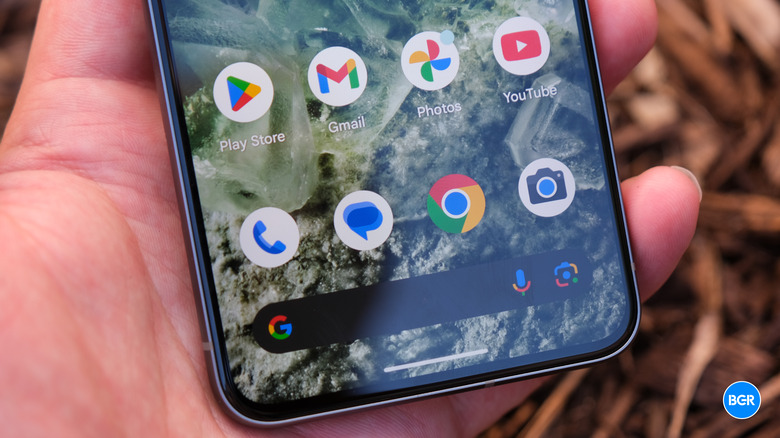Google's Find My Device Network Is Finally Working For Some People
When Apple launched the AirTag several years ago, it turned its massive network of iPhones, iPads, and other connected devices into an enormous network that could track AirTagged objects, even while they are offline.
The Android ecosystem didn't have the same functionality until I/O 2023, when Google announced its own Find My Device network. The principle is the same. Any Android-based connected device can locate other people's lost items with AirTag-like trackers made specifically for Android.
However, Google postponed the feature's rollout as it worked with Apple to create cross-platform protections to prevent stalking and other abuse.
Almost a year later, Google is finally rolling out its Find My Device network. It's a great feature to use if your Android phone supports it and you use tracker gadgets to secure personal belongings. That is, your Android phone will support it, but the feature is rolling out slowly, so you might have to wait for it. But Google confirmed the feature is coming in three days.
Delays mounted
Bluetooth trackers are available from Tile, Chipolo, and Pebblebee. Some of them have been around since before the AirTag rolled along. But these trackers aren't connected to the web by themselves, nor do they feature GPS trackers. They'd need to ping other devices via Bluetooth to determine their location.
An iPhone part of Apple's Find My network would ping an AirTag when nearby securely and anonymously so that the AirTag object gets location information.
The same thing would happen with trackers made for Google's Find My Device network. They'd "talk" to Android phones and other connected devices to help users obtain location data for the objects tied to the trackers.
The reason Google delayed the launch of Find My Device concerns security. Google partnered with Apple last year to develop a new standard that would prevent unwanted tracking. That standard is rolling out via iOS 17.5 (now in beta) on iPhone.
The point of the technology is to prevent an iPhone user from tracking an Android user with AirTags. Or for an Android user to rely on third-party trackers to track iPhone users.
Early Find My Device availability
Now that the standard is out, Google seems to be ready to launch the Find My Device network. Some users have found evidence of the Find My Device network rollout in the Settings app earlier this week. The feature rolled out with Google Play Service beta version 24.12.14, but not all Android users will get it immediately.
Some users might not even see it for a while, as this seems to be a slow rollout from Google. This means losing offline objects with trackers attached is risky at this time. You won't be able to locate them until enough Android phones are active.
Seems like Google has started rolling out the Find My Network with Google Play Service beta version 24.12.14
It's enabled for me without turning on any kind of flags. #Google #Android pic.twitter.com/WcxXMlPsLE
— AssembleDebug (Shiv) (@AssembleDebug) April 3, 2024
Once the Find My Device network support feature hits your Android phone, you'll have to decide whether you want to participate. That is if the network can use your Android phone's location to locate nearby devices. The settings in the second image above indicate the options available to you.
You can avoid participating in the network or select one of the scenarios below, as found by 9to5Google:
Without network: "Your device won't participate in the network. You can still locate your offline devices using their stored recent locations when they were online."
With network in high-traffic areas only: "Locate using stored recent locations or the network in areas like airports or busy footpaths. To help find a lost item, location info from your device is used only if others in the network also detect the item."
With the network in all areas: "Locate using stored recent locations or the network even in low-traffic areas. To help find a lost item, location info from just your device may be used if it's the only one in the network to detect the item."
What Google says
The same 9to5Google notes that Google started notifying some users on Thursday about the Find My Device feature rollout, reminding them of the benefits of using it to track offline devices:
With the new Find My Device network, you'll be able to locate your devices even if they're offline. You can also find any compatible Fast Pair accessories when they're disconnected from your device. This includes compatible earbuds and headphones, and trackers that you can attach to your wallet, keys, or bike.
Furthermore, Google provided an official launch timeframe. It's happening in three days, and you'll be notified once it's out widely:
You'll get a notification on your Android devices when this feature is turned on in 3 days. Until then, you can opt out of the network through Find My Device on the web.
The Find My Device network is only good if the majority of the billions of Android device users out there turn on the feature. At the very least, enabling the feature on your device will let you track your own offline devices.
